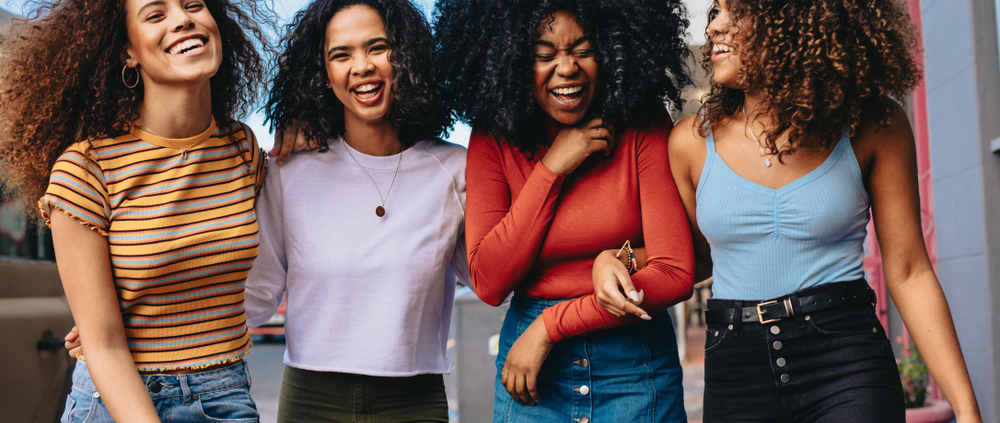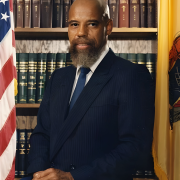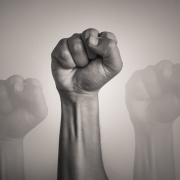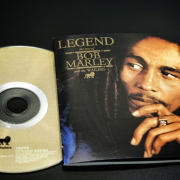Uniting Against Colorism: The Collective Responsibility of Media, Education, and Community for Celebrating Diverse Blackness
By Esther Claudette Gittens | Editorial Credit: Jacob Lund / shutterstock.com
Addressing colorism, it is essential that the media industries, educational systems, and communities work together to dismantle colorist attitudes and promote diverse representation. This requires intentional efforts to highlight and celebrate all shades of Blackness, creating spaces where everyone feels seen, valued, and respected. Read more at www.askthelawyer.us. To read the complete analysis in our publication, click here, and on our civil rights blog, click here.
- Introduction
- Definition of Colorism: A brief overview of colorism, differentiating it from racism, and tracing its historical roots within slavery, colonialism, and caste systems.
- Purpose and Scope: Highlighting why colorism is critical, especially within and outside the Black community, and how it influences various societal aspects.
- Thesis Statement: Addressing the pervasive effects of colorism on representation in media, beauty standards, and social dynamics, and the efforts to challenge these narratives.
- Historical Context of Colorism
- Origins and Development: Tracing the origins of colorism back to slavery, where lighter-skinned Black people were often favored and given different societal roles, reinforcing a hierarchy based on skin tone.
- Colonial Influence: How colonial powers imposed a value system that privileged whiteness and light skin, shaping societal structures and attitudes in many parts of the world, including Africa, the Caribbean, and Latin America.
- Colorism in Post-Colonial Societies: Persistence of colorism in post-colonial societies and its manifestations within social, economic, and cultural dynamics.
III. The Impact of Colorism on Representation in Media
- Underrepresentation of Dark Skin in Media: Discussing the historical and current lack of representation of darker-skinned individuals in film, television, advertisements, and popular culture.
- Stereotypical Roles: Examination of the roles that darker-skinned actors are often relegated to, such as antagonists, victims, or servants, perpetuating harmful stereotypes.
- Preferential Casting and Colorism: Analysis of casting decisions in Hollywood and global media that favor lighter-skinned actors for leading and desirable roles.
- Case Studies: Exploration of specific examples, such as the media careers of Lupita Nyong’o and Viola Davis, and how their successes and challenges reflect broader colorist attitudes.
- Colorism and Beauty Standards
- Eurocentric Beauty Standards: How beauty standards favor lighter skin, straighter hair, and European features, marginalizing darker-skinned individuals within and outside the Black community.
- Beauty Industry Practices: Examination of the beauty industry’s role in perpetuating colorism, including skin-lightening products, marketing strategies, and biases in beauty pageants.
- Social Media Influence: The role of social media in reinforcing and challenging beauty standards, including the impact of filters, editing apps, and influencer culture on perceptions of beauty.
- Impact on Self-Esteem and Identity: How colorism affects self-perception, self-esteem, and identity among darker-skinned individuals, particularly women.
- Social Dynamics and Intra-Community Colorism
- Colorism Within the Black Community: Exploring how colorism manifests within the Black community, including family dynamics, romantic preferences, and social hierarchies.
- Impact on Relationships and Social Status: How colorist attitudes affect dating, marriage, and professional opportunities, often privileging lighter skin within social circles.
- Internalized Colorism and Psychological Impact: The mental and emotional toll of colorism on individuals, including internalized bias and identity struggles.
- Intersectionality: The intersection of colorism with other forms of discrimination, such as sexism and classism, creating compounded disadvantages for darker-skinned women.
- Challenging Colorist Narratives in Media and Society
- Representation in Film and Television: Highlighting movies, shows, and creators that challenge colorism by showcasing diverse shades of Blackness, such as “Black Panther” and “Insecure.”
- Social Media Advocacy: The role of social media movements like #BlackGirlMagic, #MelaninPoppin, and #UnfairandLovely in celebrating darker skin tones and pushing for change.
- Influential Voices and Activists: Profiles of public figures, activists, and content creators who are leading the fight against colorism, advocating for inclusive representation and beauty standards.
VII. The Role of Education and Media Literacy
- Importance of Media Literacy: Educating audiences on how media shapes perceptions of beauty, identity, and self-worth, and the importance of critically engaging with content.
- Curriculum Inclusion: Suggestions for incorporating discussions of colorism into school curricula to foster awareness and acceptance from an early age.
- Workshops and Programs: Highlighting community programs and workshops that focus on self-love, cultural pride, and challenging colorist biases.
VIII. Suggested Solutions and Path Forward
- Diversifying Representation: Encouraging media, advertising, and fashion industries to feature a wider range of skin tones, body types, and hair textures authentically and consistently.
- Policy and Industry Changes: Proposals for industry-wide standards and policies that prevent discriminatory practices in casting, hiring, and product marketing.
- Community and Grassroots Initiatives: The importance of community-driven efforts to combat colorism through storytelling, art, and local activism.
- Promoting Self-Love and Acceptance: Strategies for individuals and communities to cultivate self-acceptance and pride in one’s skin tone, dismantling colorist narratives at a personal level.
- Conclusion
- Summary of Key Points: Reiterating the impacts of colorism on media representation, beauty standards, and social dynamics.
- Call to Action: Emphasizing the need for collective action from media creators, consumers, and communities to challenge and change colorist narratives.
- Vision for the Future: Imagining a future where diverse shades of Blackness are celebrated, respected, and represented authentically across all forms of media.
- Introduction
Definition of Colorism
Colorism, often misunderstood as simply a subset of racism, refers specifically to discrimination based on skin tone, where lighter skin is often favored over darker skin within racial or ethnic groups. Unlike racism, which is rooted in the idea of racial superiority and inferiority among different races, colorism operates within the same racial group and assigns value based on complexion. This bias, rooted in historical and social hierarchies, affects how individuals are perceived, treated, and valued in society.
Colorism has particularly pernicious effects within the Black community, where preferences for lighter skin tones have been perpetuated through media, beauty standards, and social interactions. It is not just a legacy of colonialism and slavery but also a continuously evolving issue that intersects with contemporary cultural dynamics and globalization.
Purpose and Scope
The purpose of this analysis is to explore the multifaceted impact of colorism on various aspects of society, especially focusing on representation in media, beauty standards, and social dynamics. While colorism is often discussed in the context of the Black community, it is important to recognize that it affects many non-white communities globally, from South Asia to Latin America.
The scope of this analysis will primarily center on the Black community, highlighting how internalized colorism affects social interactions, media portrayals, and individual self-worth. It will also explore how movements and individuals within these communities are actively challenging and dismantling colorist ideologies, advocating for authentic and diverse representation of all shades of Blackness.
Thesis Statement
Colorism remains a critical issue that impacts representation, beauty standards, and social dynamics within and outside the Black community. This analysis will explore how colorism manifests in media portrayals and everyday interactions, the psychological and social impacts it has on darker-skinned individuals, and the growing efforts to challenge these colorist narratives. By examining the role of media, beauty industries, and societal attitudes, this analysis will highlight the ongoing struggle for diverse and authentic representation. It will also propose solutions aimed at fostering a more inclusive and equitable portrayal of all shades of Blackness, advocating for systemic change in how we perceive and value skin tone.
- Historical Context of Colorism
Origins and Development
The roots of colorism can be traced back to the era of slavery and colonialism when lighter skin was equated with superiority and closer proximity to whiteness. During slavery in the United States, lighter-skinned Black people, often the mixed-race children of slave owners, were given preferential treatment. They were more likely to work in the house rather than the fields, receive marginally better food and clothing, and occasionally even gain freedom. This hierarchy established a clear association between skin tone and privilege, embedding colorism deeply within the social fabric of the time.
Colonialism further entrenched these biases. In many parts of Africa, Asia, and the Caribbean, European colonizers imposed a racial hierarchy that privileged lighter skin, influencing local customs and social structures. Colonizers often appointed lighter-skinned individuals to higher positions within colonial administrations, reinforcing the belief that lighter skin was more desirable and capable of authority.
Colonial Influence
In post-colonial societies, the legacy of colorism continued to thrive. For instance, in countries like India, the caste system was influenced by colonial ideologies, with lighter-skinned individuals often occupying higher social strata. The association between light skin and higher social status persists today, influencing everything from marriage prospects to job opportunities.
In Latin America and the Caribbean, similar dynamics unfolded. Societies developed complex racial hierarchies that placed light-skinned individuals at the top and dark-skinned individuals at the bottom. Terms like “mulatto,” “mestizo,” and “quadroon” were used to categorize people based on their degree of whiteness, illustrating the pervasive and insidious nature of colorism in these regions.
Colorism in Post-Colonial Societies
Even after the official end of colonial rule, the preference for lighter skin continued to influence social and economic dynamics. In countries like Brazil, South Africa, and India, lighter-skinned individuals often enjoy greater privileges in terms of education, employment, and social mobility. These societies, though diverse, often reflect colorist attitudes in media, politics, and everyday interactions.
Colorism also influences interpersonal relationships, affecting family dynamics, social circles, and marriage prospects. For example, in many cultures, lighter-skinned individuals are perceived as more attractive, leading to social pressures that reinforce colorist beauty standards. This internalized bias not only affects darker-skinned individuals but also perpetuates a cycle of discrimination and self-doubt within communities.
The effects of these historical influences are still evident today, as lighter-skinned individuals often find themselves with more opportunities and societal privileges compared to their darker-skinned counterparts. This ongoing legacy of colorism underscores the need for a deeper understanding and proactive measures to address these biases.
III. The Impact of Colorism on Representation in Media
Underrepresentation of Dark Skin in Media
Media representation is a powerful tool that shapes societal perceptions, and for decades, it has often excluded or marginalized darker-skinned individuals. Historically, movies, television shows, advertisements, and even children’s media have favored lighter-skinned Black individuals, perpetuating the notion that lighter is better. This preference not only affects the types of roles darker-skinned individuals can access but also impacts how they are viewed in broader society.
In Hollywood, casting directors often select lighter-skinned actors for roles that are seen as desirable, intelligent, or worthy of empathy, while darker-skinned characters are frequently relegated to roles that emphasize struggle, servitude, or villainy. This is evident in classic films like “Gone with the Wind,” where darker-skinned characters were shown as subservient, and in many contemporary films where the protagonist’s lighter complexion is highlighted in stark contrast to their darker counterparts.
Stereotypical Roles
The roles available to darker-skinned actors often reinforce harmful stereotypes. They are more likely to be cast as criminals, antagonists, or characters with negative traits, reinforcing societal biases that associate darker skin with danger or immorality. For example, in many mainstream films and TV shows, lighter-skinned actors play romantic leads or heroes, while darker-skinned actors are often cast in roles that emphasize hardship, aggression, or moral ambiguity.
These portrayals not only limit career opportunities for darker-skinned actors but also send damaging messages to audiences. Children and young adults, in particular, internalize these representations, which can shape their self-image and aspirations. When darker-skinned individuals consistently see themselves portrayed in negative or secondary roles, it affects their sense of self-worth and belonging in society.
Preferential Casting and Colorism
Preferential casting based on skin tone is not confined to the U.S. but is a global phenomenon. In Nollywood, Nigeria’s booming film industry, lighter-skinned actresses often dominate leading roles, mirroring colorist preferences seen worldwide. Similar trends are visible in Bollywood, where lighter-skinned actors are celebrated as the epitome of beauty, while darker-skinned actors are frequently typecast in less desirable roles.
Colorism in casting is also evident in advertising, where lighter-skinned models are often used to appeal to a broader (and often whiter) audience. This perpetuates a narrow standard of beauty that excludes darker-skinned individuals, reinforcing the message that light skin is more marketable and desirable.
Case Studies
Actors like Lupita Nyong’o and Viola Davis have publicly discussed their struggles with colorism in Hollywood, highlighting the additional barriers they face compared to their lighter-skinned peers. Nyong’o, despite winning an Oscar for her performance in “12 Years a Slave,” has often spoken about the limited roles available to her and how her dark skin was initially seen as a disadvantage in the industry.
Similarly, Viola Davis has frequently addressed the challenges of being a darker-skinned Black actress, noting how she has been passed over for roles in favor of lighter-skinned actresses. Their success stories are inspiring but also underscore the exceptional hurdles that darker-skinned actors must overcome in an industry that continues to favor lighter skin.
- Colorism and Beauty Standards
Eurocentric Beauty Standards
The influence of Eurocentric beauty standards extends beyond media into everyday life, dictating what is considered beautiful and desirable. Lighter skin, straighter hair, and European facial features have long been upheld as the ideal, while darker skin tones and natural hair textures are often stigmatized. These standards are pervasive, affecting everything from fashion to personal grooming choices.
In many communities, lighter-skinned individuals are often described as “prettier” or “more attractive,” a bias that is subtly reinforced through language, media portrayals, and social interactions. This preference for Eurocentric beauty can lead to a range of harmful behaviors, including the use of skin-lightening products, which are widely promoted in many parts of the world despite their health risks.
Beauty Industry Practices
The beauty industry plays a significant role in perpetuating colorist standards. For decades, advertisements for skin-lightening creams have promised users a brighter, more successful future simply by altering their skin tone. Brands like Fair & Lovely (now Glow & Lovely) have profited immensely by marketing the idea that lighter skin equates to a better life.
Moreover, makeup brands have historically catered to lighter skin tones, offering limited shade ranges that exclude darker-skinned consumers. This exclusion sends a clear message: darker skin is an afterthought, not worthy of the same attention or celebration. Although progress has been made in recent years, with brands like Fenty Beauty championing inclusivity, the industry still has a long way to go in dismantling deeply entrenched colorist practices.
Social Media Influence
Social media has become a double-edged sword in the fight against colorism. On one hand, it has allowed for the celebration of darker skin tones through movements like #MelaninPoppin and #BlackGirlMagic, which promote self-love and challenge Eurocentric beauty norms. On the other hand, filters, editing apps, and influencer culture often reinforce lighter-skinned ideals, perpetuating unrealistic beauty standards.
Platforms like Instagram and TikTok are filled with images that often favor lighter complexions, leading many users to alter their appearances in pursuit of these standards. This constant exposure can significantly impact self-esteem, particularly among young people who may feel pressured to conform to these narrow definitions of beauty.
Impact on Self-Esteem and Identity
The psychological impact of colorism on darker-skinned individuals, especially women, cannot be overstated. Many report experiencing feelings of inadequacy, low self-esteem, and internalized self-hatred due to constant comparisons to lighter-skinned peers. These feelings are often exacerbated by family members, friends, and romantic partners who may unconsciously reinforce colorist beliefs.
For darker-skinned individuals, navigating a world that consistently devalues their appearance can lead to identity struggles and mental health challenges. The pressure to conform to lighter-skinned standards of beauty can also result in harmful practices, such as excessive use of skin-lightening products, damaging hair treatments, or surgical alterations to achieve a more “acceptable” look.
- Social Dynamics and Intra-Community Colorism
Colorism Within the Black Community
Colorism is not only imposed from outside but also perpetuated within the Black community itself. Family dynamics often play a significant role, with lighter-skinned children sometimes receiving more attention, praise, or perceived advantages compared to their darker-skinned siblings. These dynamics are deeply rooted in historical preferences and continue to shape how individuals relate to each other within the community.
Colorist attitudes also manifest in dating and romantic preferences, with studies showing that lighter-skinned individuals are often perceived as more desirable partners. This internal bias can be seen in everyday interactions, where lighter skin is associated with higher social status, success, or better opportunities, creating divisions within the community.
Impact on Relationships and Social Status
The impact of colorism on personal relationships is profound. In dating, lighter-skinned individuals often report receiving more attention and being seen as more attractive. This bias affects not only romantic relationships but also friendships, professional networks, and social hierarchies. In professional settings, lighter skin can sometimes be an unspoken advantage, influencing hiring decisions, promotions, and workplace dynamics.
Colorism can also influence how individuals are perceived in social settings, with darker-skinned people sometimes facing unfair assumptions about their socioeconomic status, intelligence, or personality. These biases are often internalized, affecting how individuals interact with others and perceive their own worth.
Internalized Colorism and Psychological Impact
Internalized colorism can lead to deep psychological distress, as individuals begin to accept and perpetuate the biases they experience. This can manifest in self-destructive behaviors, negative self-talk, and a persistent sense of inferiority. For darker-skinned women, the intersection of colorism and sexism can compound these effects, leading to even greater marginalization.
The mental health impacts of colorism are often overlooked but are significant. Feelings of exclusion, inadequacy, and diminished self-worth can contribute to anxiety, depression, and other mental health issues. Addressing these psychological effects requires not only individual support but also broader cultural shifts to dismantle colorist narratives.
Intersectionality
Colorism does not exist in isolation but intersects with other forms of discrimination, such as sexism, classism, and racism. For example, darker-skinned women often face both racial and gender biases, which are further compounded by colorism. This intersectionality creates unique challenges that require nuanced understanding and targeted solutions.
In the workplace, for instance, darker-skinned women may experience not only racial and gender biases but also colorist attitudes that further limit their opportunities. This intersectionality often results in a compounded disadvantage, making it harder for darker-skinned individuals to break through social and professional barriers.
- Challenging Colorist Narratives in Media and Society
Representation in Film and Television
There has been a growing movement to challenge colorist narratives in film and television by showcasing a broader range of Black experiences and skin tones. Films like “Black Panther” and shows like “Insecure” have been celebrated for their diverse casting, highlighting darker-skinned characters in complex, leading roles. These representations challenge the status quo and offer audiences a richer, more authentic view of Blackness.
Creators like Issa Rae, Ava DuVernay, and Shonda Rhimes are at the forefront of this shift, actively working to dismantle colorist practices by casting darker-skinned actors and telling stories that center their experiences. This intentional inclusion is a powerful counter-narrative that pushes back against decades of exclusion and bias.
Social Media Advocacy
Social media has become a critical space for challenging colorism, allowing individuals to share their experiences, advocate for change, and celebrate darker skin tones. Movements like #DarkSkinRedefined and #ColorismHealing have provided platforms for people to speak out against colorist practices and promote self-acceptance.
Influencers, activists, and everyday users are using their platforms to call out brands, media outlets, and public figures who perpetuate colorist ideologies. This grassroots advocacy has sparked broader conversations about representation and pushed companies to reconsider their approaches to casting, marketing, and content creation.
Influential Voices and Activists
Public figures like Lupita Nyong’o, Michaela Coel, and Zendaya have used their platforms to speak openly about their experiences with colorism and advocate for more inclusive representation. These voices are instrumental in raising awareness and challenging the deeply ingrained biases that exist within media and society.
Activists like Aisha Phoenix and others are leading the charge in academic and social spaces, providing critical analyses of colorism and its effects. Their work helps to educate the public, challenge existing narratives, and push for systemic changes that prioritize equity and inclusion.
VII. The Role of Education and Media Literacy
Importance of Media Literacy
Media literacy is essential in combating colorism, as it equips individuals with the tools to critically analyze and challenge the representations they consume. By understanding how media shapes perceptions of beauty, race, and identity, audiences can become more discerning consumers and advocates for change.
Educational programs that teach media literacy, especially those that focus on racial and cultural representation, are crucial. These programs can help young people recognize and resist colorist narratives, empowering them to demand better representation and celebrate diversity in all its forms.
Curriculum Inclusion
Incorporating discussions of colorism into school curricula is another important step. By teaching students about the historical roots and contemporary impacts of colorism, educators can foster a more inclusive understanding of race and identity. This education can help dismantle biases from an early age and promote a culture of acceptance and celebration of all skin tones.
Workshops and Programs
Community workshops and programs that focus on self-love, cultural pride, and colorism awareness can also play a vital role in addressing these biases. These initiatives create safe spaces for individuals to discuss their experiences, learn from others, and develop strategies for combating colorism in their own lives.
VIII. Suggested Solutions and Path Forward
Diversifying Representation
One of the most effective ways to combat colorism is by diversifying representation across all forms of media. This includes not only casting a wider range of skin tones in movies, television, and advertising but also telling stories that authentically reflect the experiences of darker-skinned individuals. Representation matters, and seeing oneself reflected positively in media can have a profound impact on self-esteem and societal perceptions.
Policy and Industry Changes
Implementing policies that promote inclusive hiring, casting, and marketing practices is essential. Media companies, advertising agencies, and beauty brands need to commit to anti-colorist policies that ensure fair representation and challenge discriminatory practices. This can include setting diversity targets, providing bias training, and actively seeking input from communities affected by colorism.
Community and Grassroots Initiatives
Grassroots initiatives are crucial in driving change from the ground up. Community-led efforts to combat colorism through art, storytelling, and local activism can have a significant impact. These initiatives often resonate deeply with those most affected by colorism, providing them with the tools and support needed to push back against harmful narratives.
Promoting Self-Love and Acceptance
At an individual level, promoting self-love and acceptance is key. Encouraging people to embrace their natural skin tone and reject harmful beauty standards can help dismantle the internalized biases that perpetuate colorism. Campaigns that celebrate darker skin, natural hair, and diverse beauty can inspire confidence and foster a more inclusive sense of self-worth.
- Conclusion
Summary of Key Points
Colorism remains a pervasive issue that affects representation, beauty standards, and social dynamics within and outside the Black community. From media portrayals that favor lighter-skinned individuals to deeply ingrained societal biases, the impact of colorism is far-reaching and damaging. However, there is growing momentum to challenge these narratives, driven by advocates, creators, and everyday individuals who are demanding more inclusive and authentic representation.
Call to Action
To address colorism, it is essential that media industries, educational systems, and communities work together to dismantle colorist attitudes and promote diverse representation. This requires intentional efforts to highlight and celebrate all shades of Blackness, creating spaces where everyone feels seen, valued, and respected.
Vision for the Future
By continuing to challenge colorist narratives and advocating for systemic change, we can envision a future where beauty standards and social dynamics are truly inclusive. A world where every individual, regardless of skin tone, is celebrated for who they are and given the opportunities to thrive. This future is within reach, but it requires collective action, education, and an unwavering commitment to equity and representation.












Leave a Reply
Want to join the discussion?Feel free to contribute!